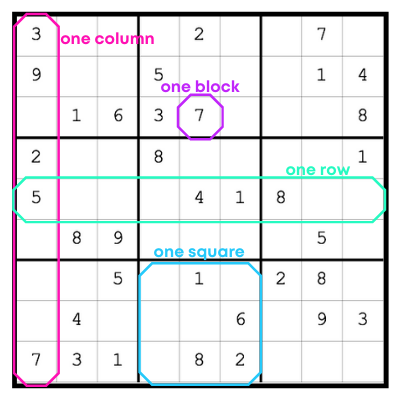The Game Rules
How to play
Solving a sudoku puzzle can be a difficult task, but the rules of the game are quite simple.
A sudoku puzzle is a grid of nine by nine squares or cells, that has been subdivided into nine subgrids or "regions" of three by three cells. See the following diagram:

The objective of sudoku is to enter a digit from 1 through 9 in each cell, in such a way that
- Each horizontal row (shown in green) contains each digit exactly once
- vertical column (shown in pink) contains each digit exactly once
- Each subgrid or region (shown in blue) contains each digit exactly once
Solving a sudoku puzzle does not require knowledge of mathematics; simple logic suffices. (Instead of digits, other symbols can be used, e.g. letters, as long as there are nine different symbols.)
In each sudoku puzzle, several digits have already been entered (the "givens"); these may not be changed.
The puzzler's job is to fill the remainder of the grid with digits -respecting, of course, the three constraints mentioned earlier.
A "good" sudoku puzzle has only one solution.